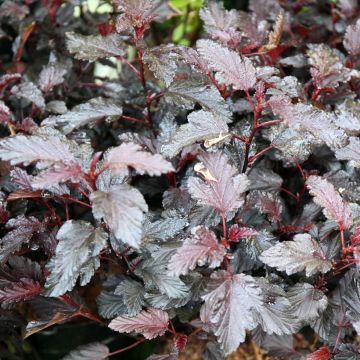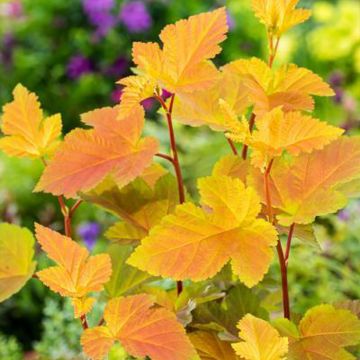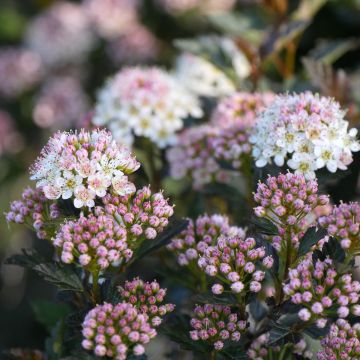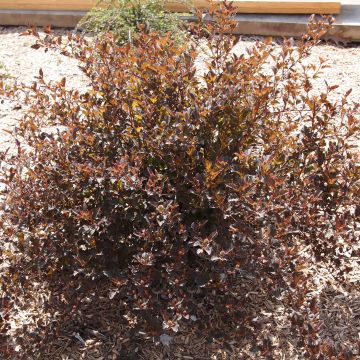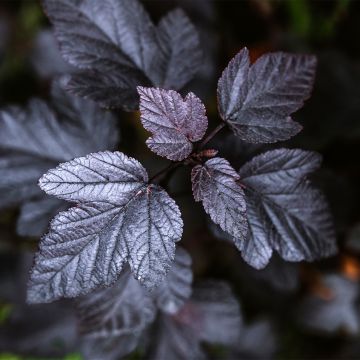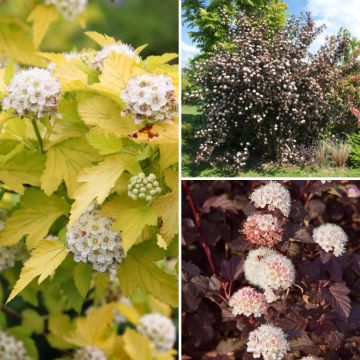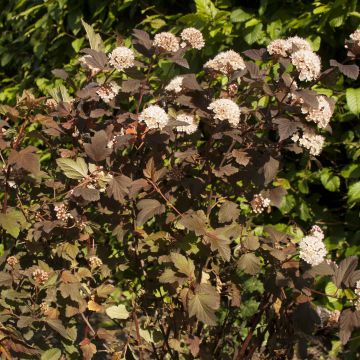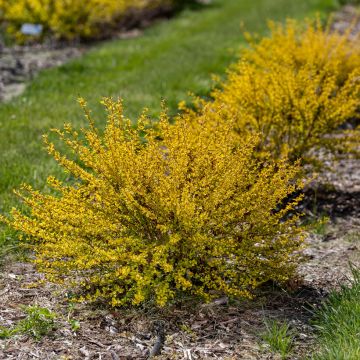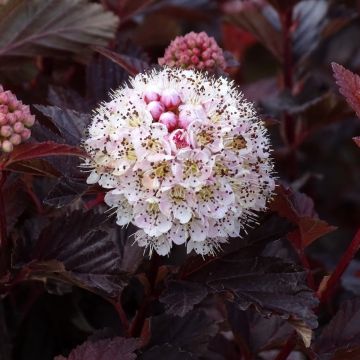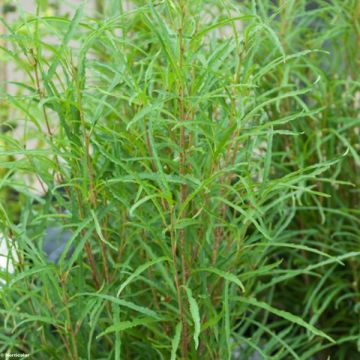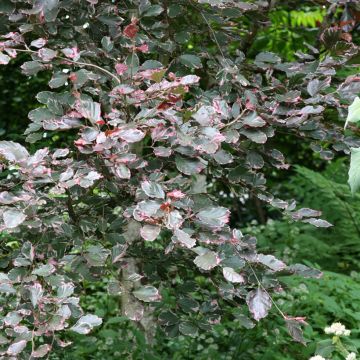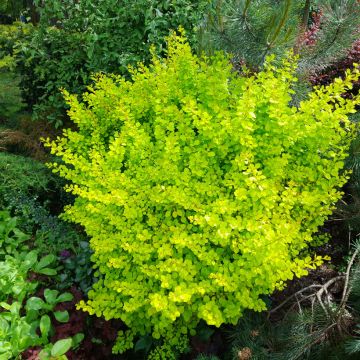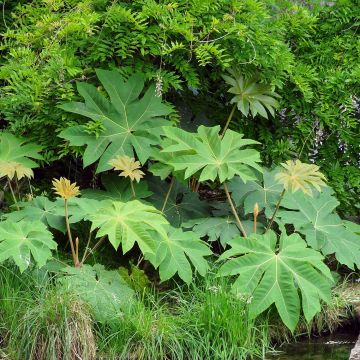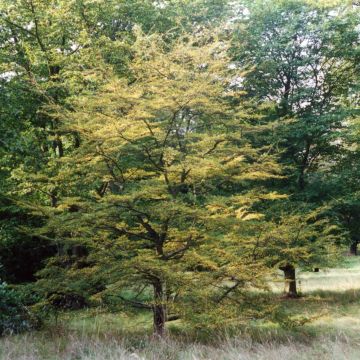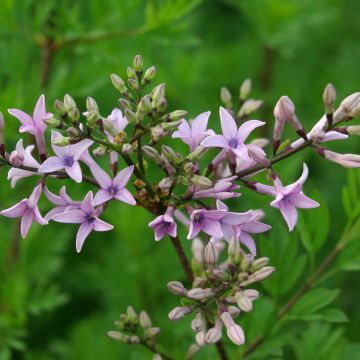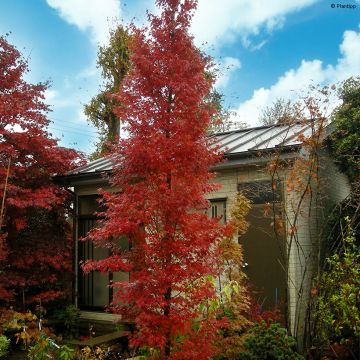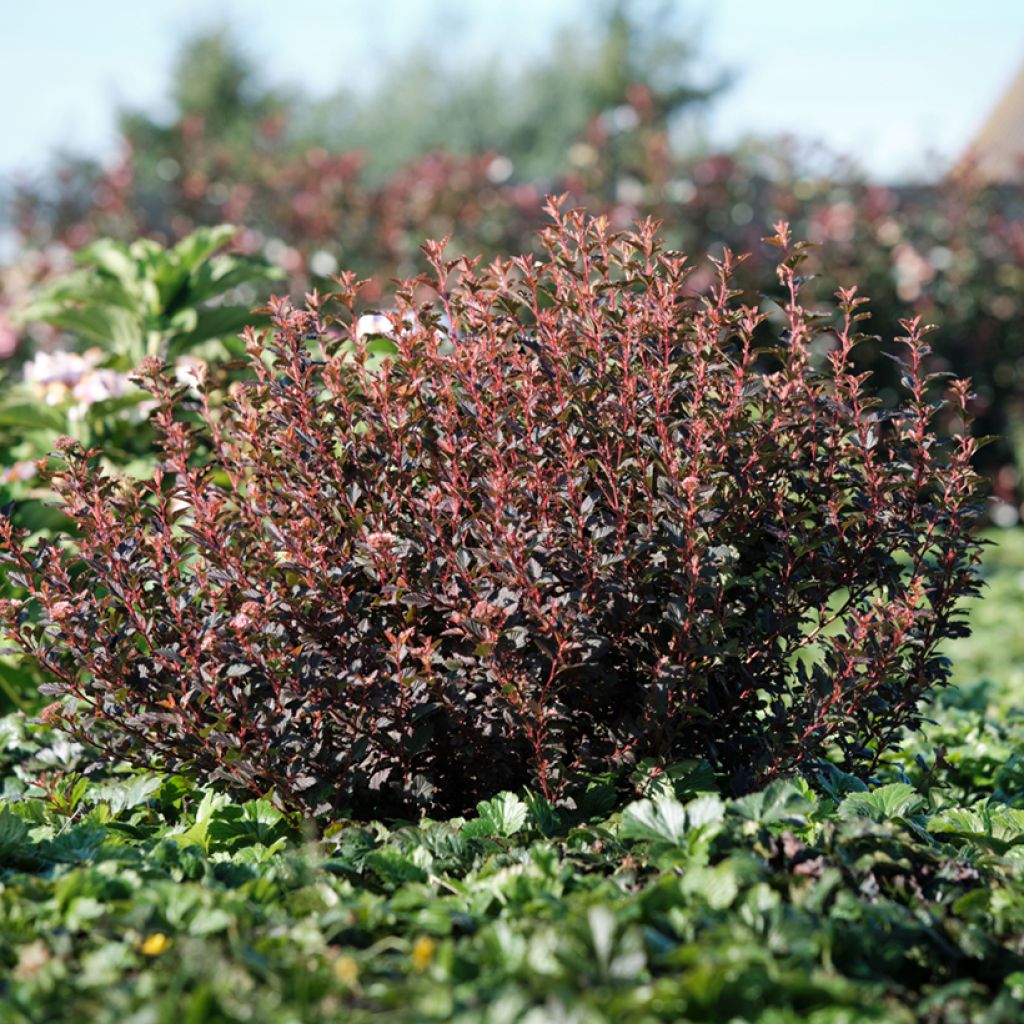

Physocarpus opulifolius Magic Sweet Cherry Tea - Physocarpe
Physocarpus opulifolius Magical Sweet Cherry Tea - Ninebark
Physocarpus opulifolius Magic Sweet Cherry Tea
Ninebark
This item cannot be shipped to the selected country
Delivery charge from €5.90
More information
Schedule delivery date,
and select date in basket
This plant carries a 24 months recovery warranty
More information
We guarantee the quality of our plants for a full growing cycle, and will replace at our expense any plant that fails to recover under normal climatic and planting conditions.
From €5.90 for pickup delivery and €6.90 for home delivery
Express home delivery from €8.90.
Does this plant fit my garden?
Set up your Plantfit profile →
Description
Physocarpus opulifolius 'Magical Sweet Cherry Tea' is a variety of Physocarpus with particularly attractive low and compact foliage, well suited to small gardens. This small bush is decorative both for its foliage, flowers, and fruits. The young orange-red leaves turn purple in season, while the dark pink flower buds bloom in light pink corymbs in spring, with a second flowering in mid-summer. Decorative pink-red fruits complete this permanent spectacle! Very hardy, equally at home in a mixed border or grown in a pot, this Physocarpus will thrive in full sun or partial shade, in slightly acidic to neutral and not too dry soil.
Physocarpus opulifolius 'Magical Sweet Cherry Tea' belongs to the large and important family of Rosaceae, which blesses us with so many ornamental species (Roses, of course, but also Photinia, Cotoneaster, Amelanchier...) as well as most of our temperate climate fruit trees (Pear, Apple, Cherry, Peach, Apricot, Plum...), not to mention many wild plants in our countryside and forests.The species-type Physocarpus opulifolius is native to the eastern United States, and widespread up to Quebec and Manitoba. It is a moderate-sized bush (1 to 3m (3 to 10ft) tall) that adapts to a wide range of edaphic (soil) and climatic conditions. Furthermore, it is a very hardy species, no wonder it has given rise to numerous ornamental varieties given its robust qualities.
'Magical Sweet Cherry Tea' is one of the latest arrivals on the market, in 2021, and stands out for its numerous ornamental qualities. It is a particularly compact variety, not exceeding 1m (3ft) to 1.20m (4ft) in all directions, which allows it to be grown not only in the ground but also in a container to embellish a balcony or terrace. Its foliage is dense and ramified, with a very upright habit that does not open up and remains well grouped and compact. Its pretty cut and toothed leaves turn orange-red after spring budding and gradually change to purple as they mature. In spring, this small bush produces dark pink flower buds, which then open into small light pink flowers, nectar-rich and visited by bees, gathered in corymbs about 5cm (2in) in diameter. This pretty flowering then blooms again in mid-summer, and as it develops into dark pink to red fruits that are highly decorative (and appreciated by birds in autumn), this Physocarpus presents a succession of ornamental scenes throughout the growing season!
Very hardy, down to approximately -28°C, this small bush is easy to grow in most soils, preferably non-calcareous, even moist as long as they are well-drained. It actually prefers coolness to dryness but once well rooted, it can withstand episodes of drought. The foliage will suffer, but the stump will survive. Obviously, in this case, it is preferable to provide it with some watering to continue enjoying the spectacle of its foliage...
Physocarpus 'Magical Sweet Cherry Tea', very compact, will find its place in borders or as a low hedge, as well as in a beautiful container on a terrace. In small gardens, it will allow the creation of varied borders with reduced dimensions, alongside other compact shrubs such as Caryopteris 'Hint of Gold', with its aromatic golden foliage in spring and beautiful blue-purple flowers in summer. Spiraea cinerea 'Grefsheim', whose branches are covered with white flowers in spring, will also be a good companion, as well as Lagerstroemia indica 'Houston', a dwarf variety of Indian Lilac with dazzling dark pink flowering throughout summer. And to have vegetation in winter, plant at its base the Hellebore sternii 'Flame', a variety that loves the sun and whose evergreen leaves are topped from February to April by a bouquet of pink flowers with changing hues.
The name Physocarpus opulifolius comes from the Greek 'phusa' which means air bubble or vesicle, and 'karpos' which means fruit, in reference to the shape of the fruit. The resemblance of its foliage to that of Viburnum opulus gave it its specific name "opulifolius". Introduced to Europe around 1687, the many colourful cultivars that have been created in recent years have allowed it to make a strong comeback in gardens.
Report an error about the product description
Plant habit
Flowering
Foliage
Botanical data
Physocarpus
opulifolius
Magic Sweet Cherry Tea
Rosaceae
Ninebark
Cultivar or hybrid
Other Physocarpus
Planting and care
Plant Physocarpus opulifolius 'Magical Sweet Cherry Tea' in deep, well-loosened, humus-rich, and preferably moist soil, preferably neutral to acidic. It fears excess limestone and excessively dry and/or compacted soils. During planting, soak the root ball in a bucket for about twenty minutes. Meanwhile, dig a hole 50cm (20in) in all directions, mix planting compost with the existing soil (half and half), and water. Place the root ball, backfill around it, and water thoroughly. Avoid allowing the soil to dry out in summer and shower the foliage during heatwaves. This bush will thrive in partial shade or full sun, but the foliage colours will be more pronounced if planted in a sunny location.
Planting period
Intended location
Care
This item has not been reviewed yet - be the first to leave a review about it.
Striking foliage shrubs
Haven't found what you were looking for?
Hardiness is the lowest winter temperature a plant can endure without suffering serious damage or even dying. However, hardiness is affected by location (a sheltered area, such as a patio), protection (winter cover) and soil type (hardiness is improved by well-drained soil).

Photo Sharing Terms & Conditions
In order to encourage gardeners to interact and share their experiences, Promesse de fleurs offers various media enabling content to be uploaded onto its Site - in particular via the ‘Photo sharing’ module.
The User agrees to refrain from:
- Posting any content that is illegal, prejudicial, insulting, racist, inciteful to hatred, revisionist, contrary to public decency, that infringes on privacy or on the privacy rights of third parties, in particular the publicity rights of persons and goods, intellectual property rights, or the right to privacy.
- Submitting content on behalf of a third party;
- Impersonate the identity of a third party and/or publish any personal information about a third party;
In general, the User undertakes to refrain from any unethical behaviour.
All Content (in particular text, comments, files, images, photos, videos, creative works, etc.), which may be subject to property or intellectual property rights, image or other private rights, shall remain the property of the User, subject to the limited rights granted by the terms of the licence granted by Promesse de fleurs as stated below. Users are at liberty to publish or not to publish such Content on the Site, notably via the ‘Photo Sharing’ facility, and accept that this Content shall be made public and freely accessible, notably on the Internet.
Users further acknowledge, undertake to have ,and guarantee that they hold all necessary rights and permissions to publish such material on the Site, in particular with regard to the legislation in force pertaining to any privacy, property, intellectual property, image, or contractual rights, or rights of any other nature. By publishing such Content on the Site, Users acknowledge accepting full liability as publishers of the Content within the meaning of the law, and grant Promesse de fleurs, free of charge, an inclusive, worldwide licence for the said Content for the entire duration of its publication, including all reproduction, representation, up/downloading, displaying, performing, transmission, and storage rights.
Users also grant permission for their name to be linked to the Content and accept that this link may not always be made available.
By engaging in posting material, Users consent to their Content becoming automatically accessible on the Internet, in particular on other sites and/or blogs and/or web pages of the Promesse de fleurs site, including in particular social pages and the Promesse de fleurs catalogue.
Users may secure the removal of entrusted content free of charge by issuing a simple request via our contact form.
The flowering period indicated on our website applies to countries and regions located in USDA zone 8 (France, the United Kingdom, Ireland, the Netherlands, etc.)
It will vary according to where you live:
- In zones 9 to 10 (Italy, Spain, Greece, etc.), flowering will occur about 2 to 4 weeks earlier.
- In zones 6 to 7 (Germany, Poland, Slovenia, and lower mountainous regions), flowering will be delayed by 2 to 3 weeks.
- In zone 5 (Central Europe, Scandinavia), blooming will be delayed by 3 to 5 weeks.
In temperate climates, pruning of spring-flowering shrubs (forsythia, spireas, etc.) should be done just after flowering.
Pruning of summer-flowering shrubs (Indian Lilac, Perovskia, etc.) can be done in winter or spring.
In cold regions as well as with frost-sensitive plants, avoid pruning too early when severe frosts may still occur.
The planting period indicated on our website applies to countries and regions located in USDA zone 8 (France, United Kingdom, Ireland, Netherlands).
It will vary according to where you live:
- In Mediterranean zones (Marseille, Madrid, Milan, etc.), autumn and winter are the best planting periods.
- In continental zones (Strasbourg, Munich, Vienna, etc.), delay planting by 2 to 3 weeks in spring and bring it forward by 2 to 4 weeks in autumn.
- In mountainous regions (the Alps, Pyrenees, Carpathians, etc.), it is best to plant in late spring (May-June) or late summer (August-September).
The harvesting period indicated on our website applies to countries and regions in USDA zone 8 (France, England, Ireland, the Netherlands).
In colder areas (Scandinavia, Poland, Austria...) fruit and vegetable harvests are likely to be delayed by 3-4 weeks.
In warmer areas (Italy, Spain, Greece, etc.), harvesting will probably take place earlier, depending on weather conditions.
The sowing periods indicated on our website apply to countries and regions within USDA Zone 8 (France, UK, Ireland, Netherlands).
In colder areas (Scandinavia, Poland, Austria...), delay any outdoor sowing by 3-4 weeks, or sow under glass.
In warmer climes (Italy, Spain, Greece, etc.), bring outdoor sowing forward by a few weeks.

































